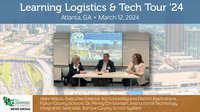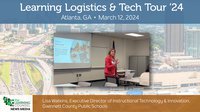With declining college enrollment and a growing trend toward skills-based hiring, it’s not surprising that more and more young people are interested in more flexible and affordable postsecondary education pathways. Unfortunately, a Bachelor’s degree remains our nation’s default aspiration for postsecondary education and significant stigma still surrounds the diversity of education and career training programs that have grown in recent years. While a traditional degree is the best option for many young people, with just 30 percent of young people completing a bachelor’s degree each year, we must find high-quality options for the 70 percent of young people seeking a different way to be career ready.
The good news is that we know from extensive research commissioned by American Student Assistance® (ASA) and Jobs for the Future (JFF) that the views of parents, educators, employers, prospective employees, as well as policymakers are rapidly evolving in favor of high-quality, nondegree pathways that provide young people with the education to be work-force ready and a strong path to economic mobility. Research shows that:
- 72% of employers believe that a degree is not a reliable signal of assessing the quality of a candidate.
- Half of parents and 97% of educators voice support for nondegree pathways after high school but want better information on the efficacy of high-quality options.
- Nearly three in four (71%) of young people in these nondegree pathway programs perceive that they are workforce ready. About one in three had pursued a certification (31%) or certificate (33%), and 20% had pursued a competency-based license.
- 81% of employers believe they should look at skills rather than degrees when hiring, and a vast majority (89%) of Washington, D.C. influencers agree that nondegree pathways can diversify options for students (93%) and provide skills to meet employer needs
So, if we listen to students, parents, educators, employers, government influencers, one thing is clear: the time has come to increase widespread awareness, understanding and acceptance of all education-to-career options – including apprenticeships, work-based learning programs, career-training programs, bootcamps, certificate programs, industry certifications, and occupation licenses.
Career training programs can be great for students who know what they want to do and are looking for education that will allow for faster time to complete, hands-on training in a specific field, lower cost, smaller classes sizes, and strong ability for immediate job placement.
These programs allow students to complete their studies sooner and enter the
workforce faster than their college-bound peers. Most are no longer than three years and some only last a few months. They can also be more economical than traditional degrees if, for no other reason, they are shorter to complete.
Job placement is also a strong component of any career training program, whether for full-time employment or for a work-based learning experience like an internship. Many programs have career coordinators to help students find relevant jobs and point to their job placement as a key metric of their programs’ success.
Now, we’re seeing practical information that parents, counselors, and educators can use to guide students toward rewarding careers. A recent report from JFF and ASA, A Universe of Possibilities: Education to Career Pathways for the Future of Work, maps the most innovative training and education opportunities for young people ages 18-25, based on data gathered on more than 400 education-to-career pathways across the country. Another important resource is an interactive checklist for young adults to explore career interests, pathway options, and financing considerations. The Pathfinder Guide and Checklist is intended to help guide conversations with parents and guidance counselors about vocational careers.
As with all career pathways, including college, not all programs offer the same benefits and there may not be clear parameters to evaluate the quality of every program, particularly those that are new. Students should look carefully at a program’s success metrics—completion and job placement being two of them—to ensure they are delivering on what they are promising.
We should take advantage of these new resources to support career-connected education and hands-on experiences. Educators, counselors, parents, and legislators owe it to them to shine light on the value of a diversity of high-quality postsecondary options so that they can make informed decisions about their futures. There is no doubt that nondegree pathways can help chart positive, rewarding futures for our young people and fuel our economy. It’s up to us to change how we think about these programs and the real value that career-focused training can bring to millions of young people who want a more career-focused form of postsecondary education.
About the author
Julie Lammers is Senior Vice President of Advocacy and Corporate Social Responsibility at American Student Assistance® (ASA), a national nonprofit changing the way kids learn about careers and prepare for their futures. Julie leads ASA’s philanthropic strategy as well as ASA’s advocacy efforts on both the federal and state level. Julie has been at ASA since March 2010. Prior to ASA, Julie spent more than nine years as Congressional Aide to Senator Edward M. Kennedy and his successor, Senator Paul Kirk, Jr. Julie is a graduate of Northeastern University, the Government Affairs Institute at Georgetown University, Suffolk University Law School, and is a member of the Massachusetts Bar.











